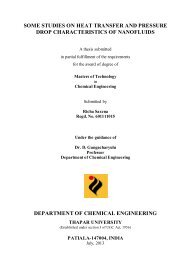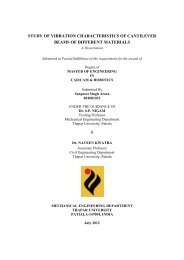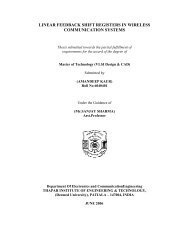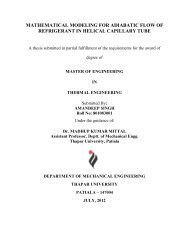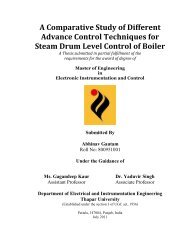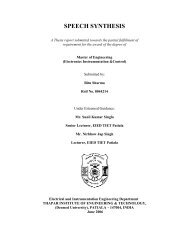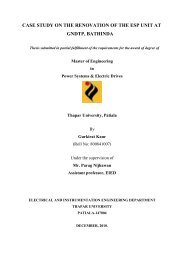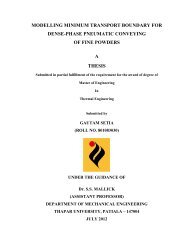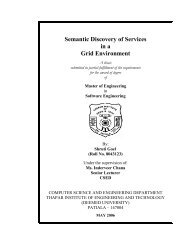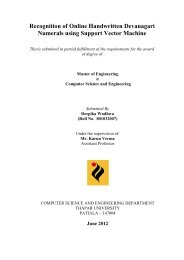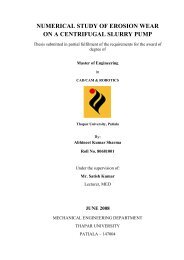from indigenous fermented foods and human gut ... - Thapar University
from indigenous fermented foods and human gut ... - Thapar University
from indigenous fermented foods and human gut ... - Thapar University
You also want an ePaper? Increase the reach of your titles
YUMPU automatically turns print PDFs into web optimized ePapers that Google loves.
66<br />
Chapter III Material <strong>and</strong> methods<br />
addition of 0.1 N NaOH. The cells were removed by centrifugation (5500 rpm, 4°C, 20 min).<br />
The cell-free culture supernatant was brought to a final ammonium sulphate concentration of<br />
20 <strong>and</strong> 40% saturation by slow addition of the salt, <strong>and</strong> was stirred overnight at 4°C. Then,<br />
the mixture was centrifuged (5500 x g, 4°C, 30 min) <strong>and</strong> the surface pellicles <strong>and</strong> bottom<br />
pellets were harvested <strong>and</strong> resuspended in 10 ml of sodium phosphate buffer (pH 6·5). To one<br />
volume of the resuspended product, 10 volumes of a methanol-chloroform mixture (1: 2, v/v)<br />
were added, <strong>and</strong> the mixture was extracted at 4°C for 1 h. The sample was centrifuged (5500<br />
rpm, 4°C, 30 min), supernatant fraction decanted <strong>and</strong> the pellet was air-dried. The pellet was<br />
resuspended in 2 ml of milli-Q water. The partially purified bacteriocin was stored at 20°C.<br />
Protein concentrations were determined by a modification of the method of Bradford (1976)<br />
using a Protein Assay Kit <strong>from</strong> BioRad Laboratories (California, USA). Bovine serum<br />
albumin was used as a st<strong>and</strong>ard.<br />
3.10 Characterization of partially purified bacteriocin<br />
3.10.1 Effect of enzymes <strong>and</strong> detergents<br />
Sensitivity of the bacteriocin to enzymes: proteinase K, (1000 units mg/ml), α-<br />
amylase (724 units mg/ml), DNase <strong>and</strong> RNase (470 units mg/ml), <strong>and</strong> pepsin (290 units<br />
mg/ml) (Sigma, MO, USA) was tested using partially purified bacteriocin samples. Each<br />
enzyme was dissolved in 10 mM sodium phosphate buffer (pH 7.0), <strong>and</strong> the solutions were<br />
added to the bacteriocin solution for a final concentration of 1 mg/ml. Following incubation<br />
at 37°C for 2 h, the mixture was heated at 100°C for 10 min to denature the enzymes. The<br />
residual bacteriocin activity (AU/ml) was measured by bioassay, using Listeria<br />
monocytogenes ATCC 19111 as an indicator strain. The effect of detergents on bacteriocin<br />
activity was also determined by adding sodium dodecyl sulfate (SDS), Tween 80, Tween 20,<br />
EDTA <strong>and</strong> urea at final concentration 0.1, 1, 2 or 5% to the cell-free supernatants in a<br />
separate experiment. All detergent-treated supernatants were incubated at 37°C for 1 h, <strong>and</strong>



